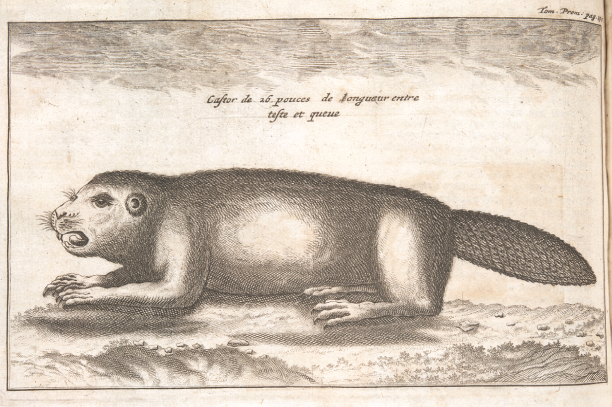America’s History: Printed Page 56
America: A Concise History: Printed Page 49
America’s History: Value Edition: Printed Page 47
New France
In the 1530s, Jacques Cartier ventured up the St. Lawrence River and claimed it for France. Cartier’s claim to the St. Lawrence languished for three-quarters of a century, but in 1608 Samuel de Champlain returned and founded the fur-trading post of Quebec. Trade with the Cree-speaking Montagnais; Algonquian-speaking Micmacs, Ottawas, and Ojibwas; and Iroquois-speaking Hurons gave the French access to furs — mink, otter, and beaver — that were in great demand in Europe. To secure plush beaver pelts from the Hurons, who controlled trade north of the Great Lakes, Champlain provided them with manufactured goods. Selling pelts, an Indian told a French priest, “makes kettles, hatchets, swords, knives, bread.” It also made guns, which Champlain sold to the Hurons.
The Hurons also became the first focus of French Catholic missionary activity. Hundreds of priests, most of them Jesuits, fanned out to live in Indian communities. They mastered Indian languages and came to understand, and sometimes respect, their values. Many Indian peoples initially welcomed the French “Black Robes” as spiritually powerful beings, but when prayers to the Christian god did not protect them from disease, the Indians grew skeptical. A Peoria chief charged that a priest’s “fables are good only in his own country; we have our own [beliefs], which do not make us die as his do.” When a drought struck, Indians blamed the missionaries. “If you cannot make rain, they speak of nothing less than making away with you,” lamented one Jesuit.
While New France became an expansive center of fur trading and missionary work, it languished as a farming settlement. In 1662, King Louis XIV (r. 1643–1714) turned New France into a royal colony and subsidized the migration of indentured servants. French servants labored under contract for three years, received a salary, and could eventually lease a farm — far more generous terms than those for indentured servants in the English colonies.

Nonetheless, few people moved to New France, a cold and forbidding country “at the end of the world,” as one migrant put it. And some state policies discouraged migration. Louis XIV drafted tens of thousands of men into military service and barred Huguenots (French Calvinist Protestants) from migrating to New France, fearing they might win converts and take control of the colony. Moreover, the French legal system gave peasants strong rights to their village lands, whereas migrants to New France faced an oppressive, aristocracy- and church-dominated feudal system. In the village of Saint Ours in Quebec, for example, peasants paid 45 percent of their wheat crop to nobles and the Catholic Church. By 1698, only 15,200 Europeans lived in New France, compared to 100,000 in England’s North American colonies.
Despite this small population, France eventually claimed a vast inland arc, from the St. Lawrence Valley through the Great Lakes and down the course of the Ohio and Mississippi rivers. Explorers and fur traders drove this expansion. In 1673, Jacques Marquette reached the Mississippi River in present-day Wisconsin; then, in 1681, Robert de La Salle traveled down the majestic river to the Gulf of Mexico. To honor Louis XIV, La Salle named the region Louisiana. By 1718, French merchants had founded the port of New Orleans at the mouth of the Mississippi. Eventually a network of about two dozen forts grew up in the Great Lakes and Mississippi. Soldiers and missionaries used them as bases of operations, while Indians, traders, and their métis (mixed-race) offspring created trading communities alongside them.